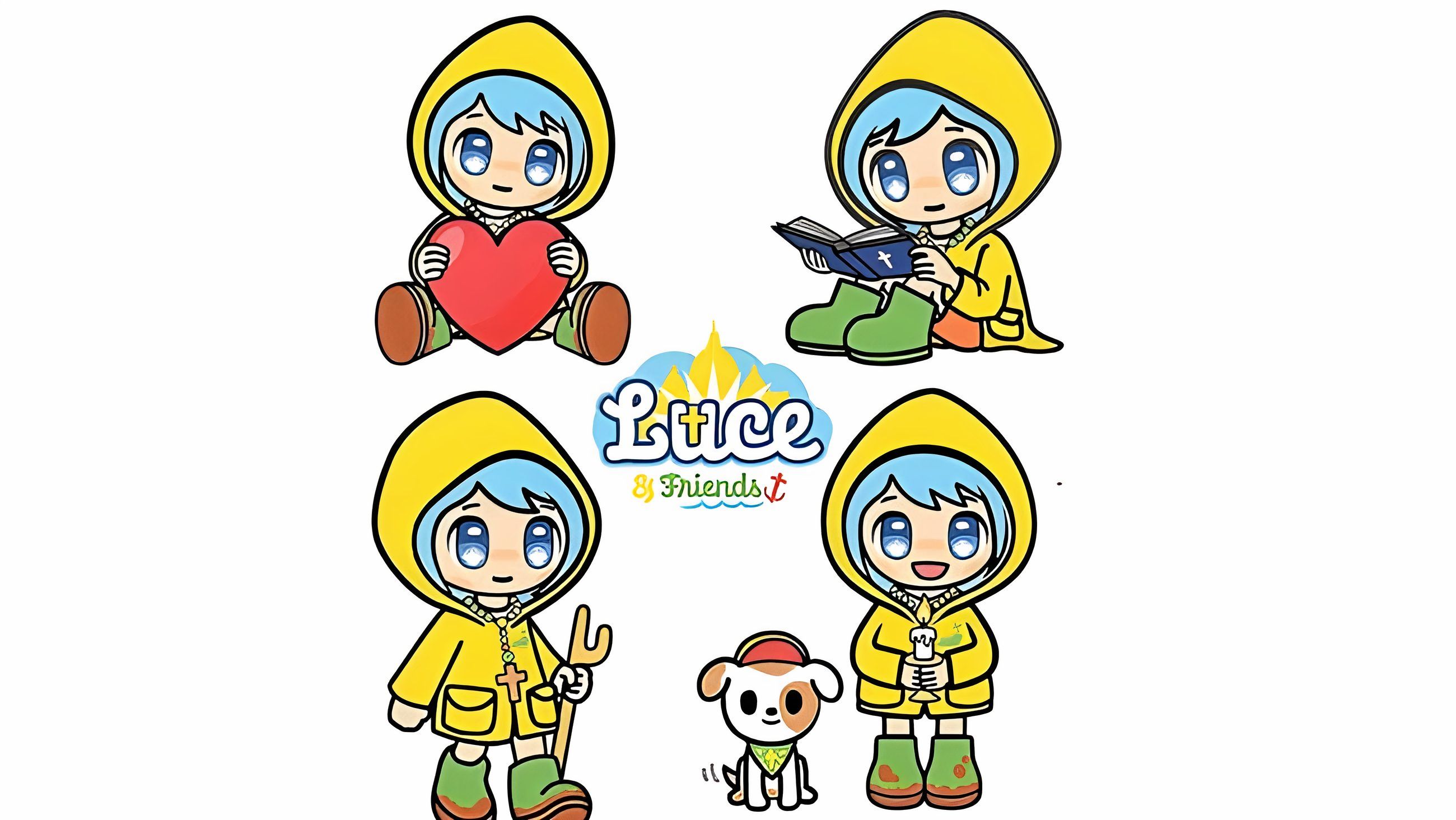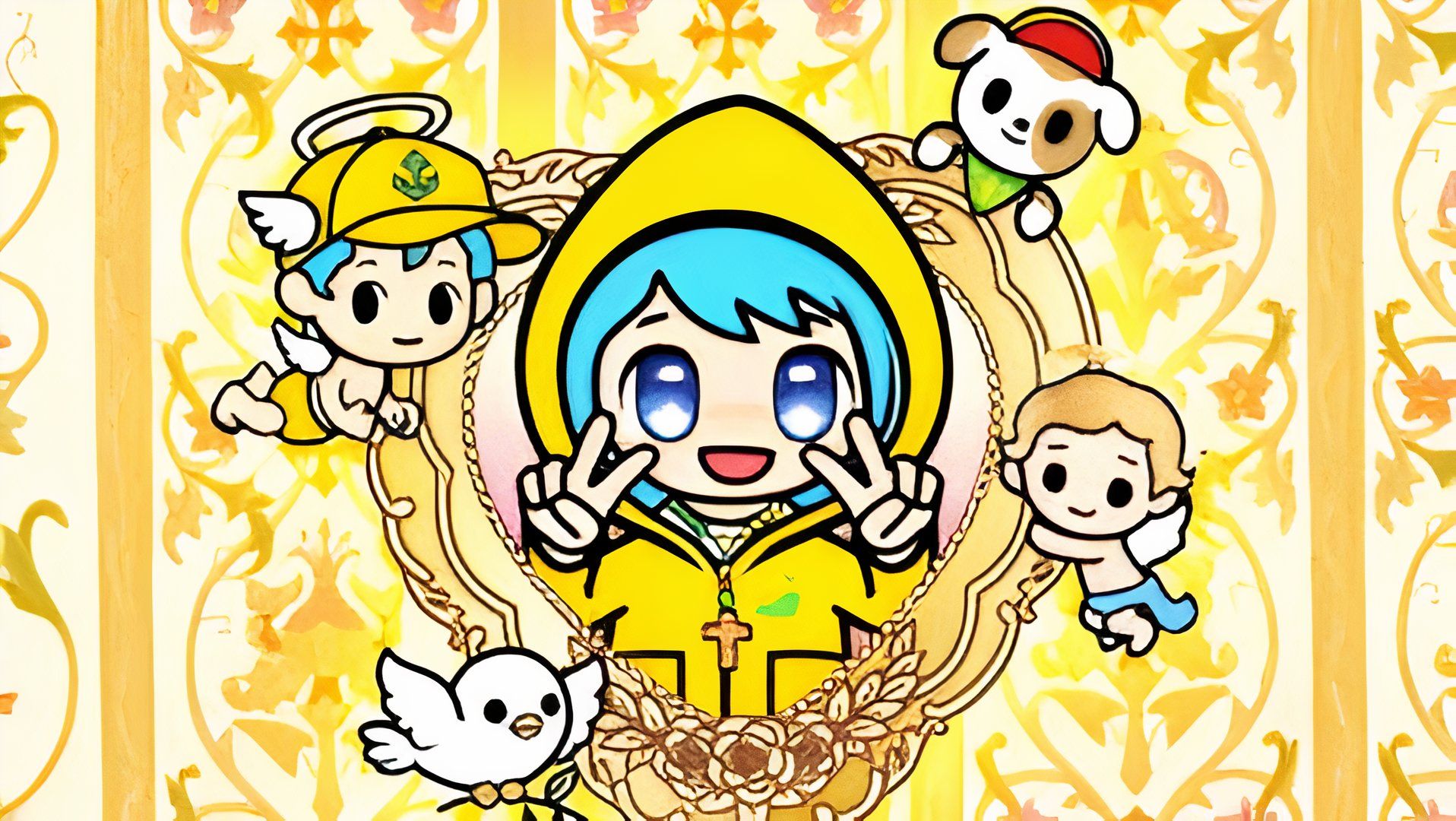Key Takeaways
- Vatican introduces Luce mascot for Jubilee 2025 to engage younger audiences.
- Luce blends Catholic symbolism with anime aesthetics, stirring mixed reactions.
- Critics debate whether mascot detracts from true faith, while supporters find Luce’s design relatable.
The Vatican recently surprised the world with a new anime-style mascot named Luce, a chibi character created to promote the upcoming Jubilee 2025 celebrations. Luce, which means “light” in Latin, was designed by Italian artist Simone Legno, founder of the pop-culture brand Tokidoki, and has quickly captured both interest and controversy online. Decked out in a bright yellow raincoat, Luce carries a pilgrim’s staff and a rosary, while her dog, Santino, tags along as a loyal companion.

Related
The Vatican Now Has an Anime Mascot
In a move no one saw coming, the Vatican has adopted a new anime mascot.
According to the Vatican, Luce was created to resonate with younger audiences through “pop culture so beloved by our young people” and symbolize hope and faith. But does the Vatican really need an anime mascot? This character has raised questions about the Church’s evolving relationship with art, youth outreach, and modern culture.
A New Era for Vatican Outreach: Who is Luce?
The Vatican is not new to grand artistic ventures, having shaped the world of religious art through Michelangelo’s frescoes and Bernini’s sculptures. But Luce represents a departure from this classical heritage, blending Catholic symbolism with anime aesthetics. Archbishop Rino Fisichella, the chief organizer of the Jubilee, introduced Luce at the Lucca Comics & Games festival, noting her purpose was to help the Vatican engage younger audiences with messages of hope and faith. Alongside Luce, other characters like Fe, Xin, and Sky were also introduced, creating a small cast meant to enhance the Jubilee experience for children and youth.
For many, Luce embodies a modern vision of the Church: one that seeks to stay relevant by entering the world of kawaii culture. But while some praise Luce as an inspired attempt at youthful engagement, others worry about the blending of religious themes with a genre typically reserved for entertainment.
The Internet’s Response: A Polarizing Mascot
The response to Luce has been wildly mixed. Many young Catholics and anime fans were delighted to see the Vatican embrace an anime character, sharing fan art and memes celebrating Luce as an unlikely but charming figure in the pop culture scene. Some commenters on social media celebrated the Vatican’s boldness, hailing Luce as a win for Catholic outreach.

Related
Priest Creates Minecraft Server to Combat Toxicity
A priest from the Vatican decides to combat toxicity in gaming by starting a Minecraft server in opposition to such behavior.
However, a vocal group of critics argued that the mascot trivializes the Church’s message. Some pointed out that Luce’s name sounds suspiciously close to “Lucifer,” sparking online jokes about unintentional symbolism. A particularly vocal sect of traditional Catholics, known as “RadTrads,” dismissed Luce as a “distraction” from true faith, arguing that such characters cater to superficiality rather than spirituality. These opinions reveal deep divides within the Catholic community on how best to engage with contemporary culture while remaining faithful to tradition.
What Does the Bible Say? Religious Justifications and Concerns
Given that anime mascots are a recent phenomenon, the Bible doesn’t address this topic directly. However, certain biblical principles can be applied to understand whether this approach aligns with Christian values.
In Favor: Art and Cultural Engagement
- Creativity as Divine Gift: In the Book of Exodus (Exodus 35:35), God grants artistic skills to individuals for the creation of beautiful artifacts, underscoring a divine endorsement for creativity. Luce, as a piece of contemporary art, could be seen as an extension of this God-given creativity.
- Engagement with Modern Culture: The Apostle Paul famously engaged with diverse cultural practices to spread the gospel (Acts 17:22-23). Similarly, using Luce to connect with younger, anime-enthused audiences might align with Paul’s strategy of adapting to reach more people.
Against: Risks of Idolatry and Distraction
- Warning Against Idolatry: The Bible strictly warns against idol worship (Exodus 20:4-5), and some critics argue that anime mascots like Luce might inadvertently shift focus from God to the character itself. Although there’s no suggestion that Luce is an object of worship, the concern is that such imagery could lead to undue focus on a fictional character rather than the divine.
- Distraction from Core Teachings: Colossians 3:2 encourages Christians to set their “minds on things above,” suggesting that focusing too heavily on trendy or commercial items might distract from spiritual priorities.
Ultimately, whether Luce aligns with Christian values depends on how she’s perceived and used. If Luce is a tool to guide and inspire rather than overshadow the faith itself, her presence could be viewed positively.
Cultural Significance: Why an Anime Mascot Matters
Anime has evolved from niche interest to global phenomenon, with aesthetics that appeal to people of all ages and backgrounds. In choosing an anime-style mascot, the Vatican is making a conscious effort to participate in this popular culture and shift perceptions of Catholicism as a tradition bound solely to classical forms. Italy has historically been at the forefront of art and cultural influence, and Luce could represent a new kind of artistic diplomacy by the Church.

Related
Vatican Supports Pokemon GO Clone Where You Collect Catholic Saints
A Pokemon GO clone called Follow JC GO! launches, allowing players to collect Catholic saints and the game reportedly has the support of Pope Francis and The Vatican.
Critics may question whether such a mascot cheapens the message of the Jubilee, but proponents argue that Luce’s friendly, anime-inspired design makes Catholic values more accessible and relatable. In a world where young people are often distanced from traditional religious practices, Luce’s approachable presence might help bridge that gap.
Is a Mascot Necessary for the Vatican’s Mission?
The Vatican’s decision to debut Luce at a pop-culture convention shows just how seriously it is considering new methods of outreach. In previous eras, cathedrals, stained-glass, and sculptures were central to religious engagement. But today, social media and pop culture are arguably as influential as any artform of the past. With millions of pilgrims expected during the Jubilee, Luce is the Vatican’s way of meeting younger generations where they are.
Some would argue that this approach reflects the Church’s ongoing mission to engage people in faith through the evolving language of culture. Others, however, insist that faith-based engagement shouldn’t require mascots and modern gimmicks, believing that the Church should rely on its timeless teachings rather than pop-culture tactics.
It ultimately falls to the Church and its followers to interpret how a character like Luce aligns with their faith. As Luce steps into the public eye, she’ll serve as both an ambassador of faith and a litmus test for how well the Catholic Church can balance contemporary relevance with timeless spirituality. The Vatican’s chibi mascot may be unconventional, but her ability to draw attention suggests that this anime-inspired character could play a unique role in shaping the Church’s future narrative.
















Leave a Reply